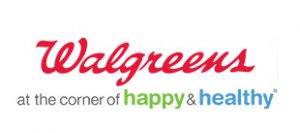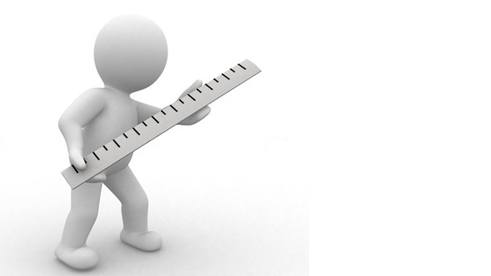
by Scott Howard | Jun 28, 2017 | Marketing and Advertising Insights, The Not-So-Secret Writings of ScLoHo, WOWO Fort Wayne Radio Advertising with Scott Howard
Sharing the motivation behind why you do what you do is powerful. Do you know your WHY? Here’s mine.
I want to help people make smart advertising and marketing choices.
Actually it’s bigger than that.
I want to help people achieve their dreams so they can feed not just their bellies, but their passions too.
Some of those dreams and passions are actual businesses and with my background, that’s often the area I can help the most.
So perhaps it’s a combination of those two statements that make up my why.

The THINKING ScLoHo
I recall several years ago a co-worker of mine was always trying to figure out how to make money online. Mike was looking at creating websites that were similar to eBay at the time and he couldn’t figure out how to make it successful.
Another friend of mine, Tim, is very talented in graphic arts and he was looking to create and sell a custom advertising pop-up that he figured out that was pretty snazzy. Problem was it was a few years behind the times and not what businesses wanted or for that matter, should want to create a positive online experience.
One more friend, I’ll call him Sam to protect his real identity, invested lots of money in buying custom domain names. I don’t know how much money and don’t want to know but it was too much especially after he kept doing it after I told him that’s not a good investment. His concept was to resell internet domain names to companies that would want them and in theory, it was a good idea, but… The idea was too late. Since Google and the other search engines continue to tweak themselves towards perfection, the domain name for your website is not as important as it was when Sam first had his idea.
What did Sam, Tim and Mike have in common? Their why was to make money online.
That was as deep as they thought it through.
Making money is neither good or bad, money is merely the stuff we use to trade for other stuff we need or want.
The Bible says, well, let me quote Chris Brown from the Stewardship.com website:
1st Timothy chapter 6 verse 10, For the Love of Money is the root of All Evil. Raise your hand if you’ve heard this verse misquoted all the time as saying money is the root of all evil. I have! But it’s just not true. It’s the love of money that gets us in trouble. Our attitude toward money is the problem, not the money itself. Money is morally neutral.
It comes back to the motivation behind it all. It’s all about the why. Your why.

The SKEPTICAL ScLoHo
I once had a dentist as a client that offered new techniques and procedures and I was impressed. At least I was initially. Then he kept finding “problems” that no one else had found with my dental health, and each “problem” he found meant more and more expensive procedures. My gut told me to get a second opinion and I did.
My current dentist could not find any of the “problems” my previous dentist warned me about and while he didn’t want to bad mouth the other guy, it was clear to me that the motivation behind my former dentist’s recommendations were his self-interests, not mine. His why was wrong.
Most of the people I meet with who are in business are good people. They have a good why that motivates them to do the right thing all the time.
Like I said earlier my why boils down to helping people make smart marketing and advertising decisions, because that is my area of expertise that I’ve learned over the years and continue to learn more and more every week. I usually sign my emails with the signature, Here to help, and the phone number I give people to connect with me is a vanity number I selected years ago. The last four digits spell HELP on a traditional phone keypad.

The HAPPY ScLoHo
Once you understand my why, and I understand your why, we can have a deeper and better relationship to help you accomplish your goals. Want help? Let’s talk.
PS:
This talk about What’s Your Why? was inspired by a couple of people recently. In 2014, Shannon Allen of Federated Digital Solutions would share Simon Sinek’s Golden Circle TED Talk that goes into this concept. Here’s a link to the 5 minute version. Oh, and here’s a link to a sales expert that I found when Googling Simon that has a few additional caveats when applying this concept.
David McBee of Simplifi, one of our internet vendor partners, recently talked about the concept in a webinar I watched this year.
And over the weekend, the Golden Circle message was included in the sermon at my church as part of the message delivered by Dr. Tom Ahlersmeyer (June 25, 2017).
I figured it was time for me to talk about it too.

by Scott Howard | Jun 15, 2017 | Marketing and Advertising Insights, Really? The Personal ScLoHo, The Not-So-Secret Writings of ScLoHo
Last month, my wife and I hit the road for a long Memorial Day weekend visit to see my son Josh and his wife Madeline. They moved from Indiana to South Carolina a couple years ago and we were looking forward to seeing their new place and enjoying the weekend including some beach time at Hilton Head.
I was the chief navigator as my Mrs. occupied the drivers seat most of the 4 days on the road.
I got to assist as the Google Maps GPS lady would tell us when to turn and quite frankly, she took us down some roads that are hardly traveled unless you are one of the locals. I purposely set the GPS to avoid interstates and we saw some great country side along with traveling on two lane roads through the mountains.
What’s this have to do with advertising and marketing?
A couple of thoughts came to mind actually.
- Don’t be afraid to take a different route than the others in your business. As long as you know where you want to end up, be courageous and consider the alternate routes and the roads less traveled.
- Advertising messages that we are exposed to in our cars… that’s the real topic for today.
- The relevancy of radio commercials and the way they are presented can make a huge difference, but I’ll save the details for a future article.
We saw lots of messages on road side signs and billboards as we traveled and many were informative. Some were informational which was helpful when we needed to know how far it was to the next town, or gas station.
Very few advertising messages on the billboards were memorable, at least for us. Many had too many words or the font and colors made it hard to read. Others had messages that I didn’t relate to because I wasn’t familiar with the area.
By the way, if you ever do billboard advertising, keep the message down to 7 words or less. McDonalds does a good job with this, they had the most memorable signs during our trip.
We also ran across a couple detours during our road trip and I’m going to take us down one with this article right now too.
Several years ago Walgreens decided to make a huge investment in their marketing that went beyond their advertising. In my part of Fort Wayne, I noticed that Walgreens expanded and built a free standing store across the intersection from the strip mall they were previously occupying for years.
The new Walgreens sign included an LED sign with messages that they programmed in to announce sale prices for their specials. Sometimes they broke the seven words rule I mentioned a moment ago, but their marketing strategy went deep, much deeper than most folks realized at the time they were converting from strip mall locations to free standing stores.
Nearly every store now has this LED sign attached to the familiar Walgreens sign. Think for a second about the last time you saw one of signs in front of a Walgreens. You probably don’t remember the specials they advertised but that’s okay. Those specials advertised on the LED signs were only designed to convert a few people who say them into customers at the moment. I haven’t done a study or even talked to the marketing people at Walgreens, but I bet they change the advertising messages at least once a week, since they change their other advertising specials weekly too.
Now here’s the genius behind Walgreens deep marketing strategy. Did you ever notice where Walgreens is located? Most likely they are at an intersection. A street corner. Not just any street corner however. A street corner intersection that has a traffic light. That traffic light is key to the success of their LED signs advertising weekly specials.
The traffic light forces some of the cars at the intersection to stop for a period of time. What do you do when you are waiting for the light to change green? You look around, out the window and you see the LED sign at Walgreens. It captures your attention because it is changing, not static. The advertising messages change every few seconds with different specials. It draws you in.
Most of us don’t even realize that Walgreens has coordinated the placement of their stores to street corners with traffic lights so we would read the advertising messages on their LED signs and be influenced to think positively about Walgreens.

Have you been to your corner store?
Oh, there is another element to Walgreens marketing that I noticed awhile ago. They didn’t announce that they were rebranding their advertising with a new slogan, they just tied it all together when they had enough of these new corner stores built. Walgreens at the corner of happy & healthy is a registered trademark. That means they were serious about everything I’ve been talking about.
Obviously Walgreens has deeper pockets than most small or medium businesses and they could have pulled the plug on these marketing tactics any time down the road but they didn’t and while the advertising slogan isn’t going to change your mind about where you buy your drugs, birthday cards or toilet paper, it’s influential even if you were unaware until now. Just the other day Walgreens Chief Digital Marketing Officer published insight on what they are doing now and in the future to stay relevant as many brick and mortar retailers are struggling this year.
Walgreens invested in the long term with the marketing strategy that included real estate investments along with everything else.
However every once in awhile there are opportunities to grab people’s attention in traffic that take advantage of a short term situation.
The busiest intersection in Fort Wayne Indiana is Coliseum and Coldwater and right now the section of Coldwater road north of Coliseum is under construction with two lanes closed. If traffic was bad before, it’s extra bad now.
There is no Walgreens at this intersection but close to the intersection is a Merle Norman Cosmetics Studio. They had a banner made that hangs along the road that anyone heading south will see. It reads, “Traffic is a Drag, Makeup is Fun” with their name and phone number. I shared it on Facebook and a lot of folks agreed, it is clever marketing that takes advantage of a bad situation and puts a smile on faces.

Clever Marketing in action
Are you ready to stop doing what everyone else in your profession is doing to advertise and market your business and perhaps take the road less traveled?
Are you ready to dig deep and start planning a long term marketing strategy like Walgreens?
And are you ready to take advantage of opportunities that present themselves right in front of you like Merle Norman?
Let’s talk, explore, dig and plan. Contact me.

by Scott Howard | Jun 8, 2017 | Marketing and Advertising Insights, The Not-So-Secret Writings of ScLoHo, WOWO Fort Wayne Radio Advertising with Scott Howard
It’s a question I was asked recently, “Of all the ways I could advertise my business, what is the best and what is the worst?”
It’s a good question and I have some answers, but what I am about to share with you is not exactly what I told this person the other day.
See, by the time he asked me that question, we had already talked for awhile and I had an understanding of what he wanted and needed to accomplish by advertising.
If you don’t know what the end result is that you want to see, then how in the world will you know what is needed?
It’s like a question I saw on the website Quora dot com once. Someone asked what was the ideal speed to drive a car. That’s it. The entire question was what is the ideal speed to drive a car. People who had too much time on their hands answered, but really there needed to be some qualifications included with the question.
Twenty miles an hour could be the ideal speed to drive a car on a very rough dirt road filled with hazards and 80 miles an hour could be the ideal speed to drive a car on a freshly built highway.
Right?
So let’s go back to the topic, What Are The Best and Worst Ways to Advertise and come up with a few guidelines.
1. Your advertising needs to reach an audience of people that are likely to be your customers. When I say audience, I am referring to the people that will see, hear, or read your ad. And let’s define customers as people who will one day spend money with you.
Here’s a couple example of what you don’t want to do: Run an ad for hot dogs in Vegan Life magazine. Air hearing aid commercials on a teen oriented radio station. That’s almost as ridiculous as attempting to sell snowmobiles in Miami or Christmas trees in July.
2. Nearly every advertising medium can work, if used appropriately with realistic expectations. While the newspaper industry has suffered tremendous losses over the past couple of decades in both readership and advertising revenue, there are still plenty of niche publications that are doing quite well. We live in an area of specialization and niche’s can help us target the people we want to reach.
3. Commit to building name recognition, part one. I see my counterparts at some radio stations and most television stations sell advertising programs that are attempting to reach too many people for the money spent. A couple years ago I saw this package that offered 100 ads per month but they were scattered all over the place and with some common sense and practical reasoning, it was easy to see that it was junk. For the same price, they should have offered 50 ads each month that reached less people but with more frequency to build name recognition.
4. Commit to building name recognition, part two. This is where I tell you that in most cases, short term advertising is a waste. Advertising for a week or 30 days is not going to work in most cases. It’s not that your advertising salesperson is greedy, it’s that you might be too short sighted to see the real benefits and results that will come down the road because you can’t rush name recognition.
That’s just four and I could give you a dozen more but it’s better to really get to know the specifics of what you want to see happen before we continue. Reach out to me and let’s start the conversation.

by Scott Howard | Jun 1, 2017 | Marketing and Advertising Insights, The Not-So-Secret Writings of ScLoHo, WOWO Fort Wayne Radio Advertising with Scott Howard
How do you know if your advertising is successful?
Most business owners I know would prefer not to advertise if there was another way to get customers that was free.
But free isn’t really free. It’s just that we value some things more than others or perhaps we are used to measuring certain things with different expectations.
I titled this piece, Measure What Matters and it’s a peek into a Return On Investment or R.O.I.
Usually the R.O.I. discussions I have involve the Return On Investment of money spent on advertising.
If I was in the financial industries business, the Return On Investment would look pretty basic. A ten percent R.O.I. on a 100 dollars is 10 bucks. In other words that $100 becomes $110.
That is an easy money measurement.
So is this next one.
Hourly wage. If you work 40 hours and get paid $800 for those 40 hours, then your Return On Investment of your time is $20 per hour.
Running a business is a different animal to pin down the R.O.I. You don’t have a strict correlation between the hours you put in and the dollars you receive. It takes capital to get started. Real dollars that are not quickly translated into earnings.
There’s also time spent planning and organizing that business owners put in that go beyond typical business hours. 90% of entrepreneurs don’t have an accurate figure of how much time that have invested in their business or what the dollars are that are associated with that time.
Does that prevent them from doing the work? Usually not.
Let’s talk about Return On Investment relating to advertising and marketing. This is a very difficult calculation to figure out accurately, with the types of details that you see in your 401K portfolio.
I’m used to asking questions that create an R.O.I. formula, it was easier 30 years ago when I worked for a Christian radio station in Detroit and we had a very loyal audience that would often tell our advertising partners that Robin Sullivan of WMUZ told them to shop there. This was before the internet and social media.
See, Robin really did tell her listeners to mention her when they shopped for a mortgage or got their car repaired or any number of other things that were advertised on her radio program.
And we often get similar situations with WOWO radio, where our listeners will tell our advertising partners that Charly Butcher or Pat Miller or Rob Winters or Rick Wolf recommended them which is fantastic.
But it’s not accurate. That’s anecdotal information.
Some people who sell digital advertising products will tell you that it’s easy to track the results.
Bull.
It’s not and those that pitch things like, “We can track every visitor to your website and prove the Return On Investment,” either don’t know what they are talking about or are simply lying to you.
I offer digital advertising solutions along with the radio advertising solutions we have at WOWO radio. The one thing that some digital advertising can do is track SOME of the traffic to your website and tell you SOME of the ways that traffic got there, but this does not make it better than the anecdotal info you hear about your radio ads.
If I do a digital advertising campaign for your business, no one is going to tell you that they are buying from you because they saw your ad on their laptop. And they are not going to tell you that they clicked on your ad either. However the tracking I can see will show me that yes, people are clicking on that silly display ad and while that is nice, we still haven’t determined if you are getting a positive Return On Your Advertising Investment just from those numbers.
I’m going to point you to an article I read recently about this, click here or if you are listening to the podcast go to ScottHoward.me and this article Measure What Matters to find the link. The article is about Janet & the Cows.
So how do you Measure What Matters?
Depends. There is no one size fits all. One of my clients came up with a formula that we use to measure the success of or our digital advertising campaign that he came up with based on his success with other online marketing and it pertains to a cost per lead formula. He wanted to see anything at or below 50 bucks and we are beating that. Most weeks his cost per lead is in the 30’s.
Another client of mine simply has annual sales goals. They continue to increase each year and we help her hit those numbers. We don’t have a true R.O.I. formula but we do have anecdotal information from her radio and digital campaigns that are reassuring.
The most important take away today is: You need to determine what success looks like and pick some ways to measure the results from your advertising and marketing efforts that fits you and your business. Period.
Want help? Ask me.

by Scott Howard | May 25, 2017 | Marketing and Advertising Insights, ScLoHo's Collective Wisdom, The Not-So-Secret Writings of ScLoHo, WOWO Fort Wayne Radio Advertising with Scott Howard
I was reading an article from Mediapost that mentioned that baby boomers who are becoming senior citizens are not what you might expect. To illustrate their point they pointed out that at age 63, Christie Brinkley could be considered a “senior”.
She is a Baby Boomer and she was featured along with her two daughters in the 2017 Sports Illustrated Swimsuit issue.
Since a big chunk of the WOWO radio listening audience is the Baby Boomer generation, I ask this question:
Does Christie Brinkley Listen to WOWO Radio?
My answer is defiantly not. Well maybe, but not likely.
Since she doesn’t hang out in the midwest and I’ve never heard her call the Pat Miller Program to express her views on, well anything, if she listens, we are not aware that Christie Brinkley is a WOWO Radio listener.
However, over the years I have found many women who will confess to me that they are a WOWO Radio listener and they think that they are a out-numbered.
On one hand, yes, there are more guys than gals that listen to WOWO’s news talk radio format, but not by much. If you were to take 10 typical WOWO listeners and put them in a room, and these 10 represented the WOWO audience, you would have 6 men and 4 women.
I was doing some research recently and from the data I have access to, more women age 40 and older in the Fort Wayne area listen to WOWO than any other radio station. When I look at Baby Boomer women, WOWO has twice as many Christie Brinkley types compared to the other Fort Wayne radio stations.
Let’s circle back to that Mediapost article that mentioned Christie Brinkley.
Quoting here:
Christie Brinkley, who at 63 appeared in this year’s 2017 Sports Illustrated Swimsuit Issue rocking a bikini alongside her daughters—all the proof you need that 60 can be confident, sexy and in the spotlight.
Brinkley said, “In a country that’s very ageist, people love to put you in little boxes. Women feel very limited by their numbers. On a personal level, I thought, if I can pull this off, I think it will help redefine those numbers and remove some of the fear of aging.”
At 60 and beyond, Boomers continue to be a dynamic and powerful consumer segment. They may not be considered young, but their youthful energy has them constantly on the lookout for new and improved products and services that help them achieve the active, full lives after 60 that previous generations could only have imagined.
Here’s a couple of take-aways from the Mediapost article that you can apply to the women and perhaps men who listen to WOWO radio:
1. They represent a large and growing consumer market
At 37 million and growing, Americans in their 60’s have been the fastest-growing age group since the turn of the century.
2. They have big spending power
The average net worth for 60-somethings is significantly greater than it is for Americans in their 20s (by 99%), 30s (+67%), 40s (+27%), and 50s (+13%).
Nearly half (40%) of today’s 60-somethings are still working.
On top of that, many 60-somethings are choosing to forego leaving a large inheritance and instead are opting to spend on experiences they can share with their children and grandchildren in the moment.
3. They’re not slowing down
Today’s 60-somethings know they’ve still got it. Their mindset is characterized by a steadfast belief in their abilities, a desire to learn and try new things, and wanting to raise the bar on what’s possible at this life stage.
They understand the need to care for their health differently than when they were younger, so they pay more attention to their diets, stay informed about advances in healthcare, use supplements and prescription drugs when needed, and take fitness seriously.
4. They embrace technology that matters
80% of 60 – 69 year olds are online, and nearly 8 in 10 of those online use smartphones.
They are leading the charge for devices and services that make their homes more secure and efficient. Next up is technology that will help them monitor and manage their health.
5. They’re a big influence on their adult children.
More than previous generations, Boomers and their adult children like, trust, and go to each other for advice.
When I listen to WOWO radio, I hear ads for home improvement, luxury automobiles, financial products and other big buck items that Baby Boomers are spending their money on.
Want to know more about how to invite WOWO listeners to spend money with you? Contact me.










